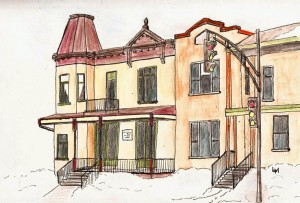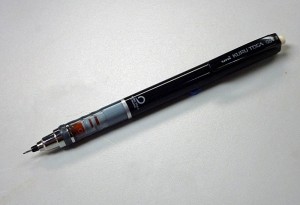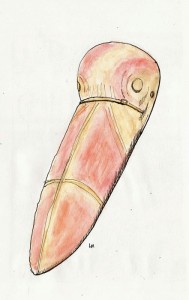A while ago, in a Facebook group, Liz Steel posted the quote above. To be completely honest I can’t remember what the thread was that it was in reference to but she said that Paul Laseau’s book, Freehand Sketching: An Introduction, was one of her favorites.
I listen closely when Liz speaks but in this case her words were overshadowed by the Paul Laseau quote. Every book on drawing is filled with ‘explanations’ on how to do proper perspective, complete with mind-boggling graphics with lines going in all directions, vanishing points, etc. I’ve often joked that I’m afraid to read a book on perspective for fear that I’ll get too confused to do my building sketches.
I’ve long felt the sentiment that Paul Laseau’s comment is true and, for myself, I never do all that perspective “stuff” beyond noticing where my “horizon line” (eye line) is when I do a sketch. So, I just had to buy Freehand Sketching to see why Paul Laseau’s view was so different from the art world’s descriptions of structure drawing.
I did buy it and, if you’re a location sketcher, I highly recommend you put aside your traditional drawing books and read this one – a couple times. You’ll be the better for it. In a mere 112 pages, Laseau will first convince you that drawing ‘existing environments’ is different from making stuff up in a studio environment and he teaches, in simple terms, how to see and organize a scene than most modern approaches to drawing ever will.
Why? What could he say that others do not? Well, not much, really. Mostly he leaves out a lot of stuff that you don’t need to worry about if you’ve got the thing you’re trying to draw right in front of you.
His introductory chapters include some traditional stuff about doing contour drawings, learning how to hatch, etc. and, for me, that part is mostly ho-hum. But the heart of this book is contained in the middle sections titled Environment: Sketch Construction and Environment: Sketch Tone and Detail. Here, Laseau shows you how to identify/organize/and lay out with a few lines, the basic shapes of a scene. This stuff is gold for a street sketcher and demonstrates that no fancy geometry is required but rather it’s a simple matter of ‘seeing’ angles, locations, and edge dimensions. Once he convinces you of the method, he provides several stepwise examples.
Once a scene is established, Laseau provides an approach to tone and detail and is also directed towards the location sketcher. This perspective, to me, is important as most drawing books assume a studio atmosphere and an interest in spending hours developing drawings. Laseau is an architect, who has spent 30 years teaching architect students to develop their sketching skills, who have different approaches and goals from the typical artist approach to such things and very useful, in my opinion, far more useful. If you’d like to read more about this approach, Liz Steel has just provided some great insights into the mind of an architect.
On a personal note, Laseau’s book explained something else to me. I’ve often wondered why the urban sketching world is so dominated by architects. I’ve mostly dismissed it as simply a function of an architect’s interest in buildings but it’s much more than that. It’s their training. They’re taught to sketch. They’re taught to maintain sketchbooks. They’re taught to think in terms of sketches that can be ends in themselves…what urban sketchers do.
When I bought Freehand Sketching I also bought Watercolor Sketching: An Introduction, Paul Laseau’s sequel. This second book is more about watercolors than it is about constructing sketches, though there is some of that contained within its pages. Very valuable information contained within but more a companion book to Freehand Sketching than a substitute for it.
Liz is right; Freehand Sketching is a good and potent book that any location sketcher can benefit from and well worth its small price. It’s become one of my favorite books too.













